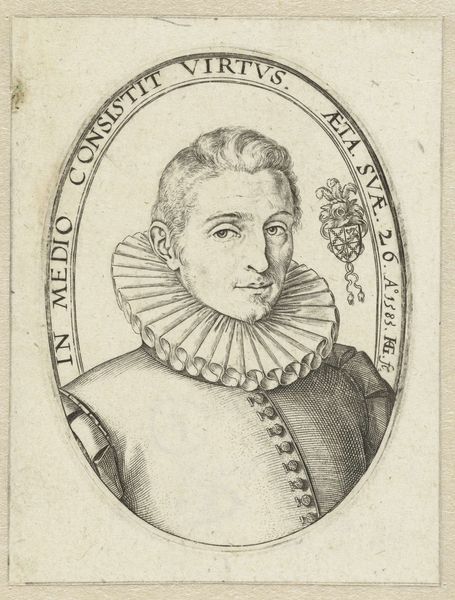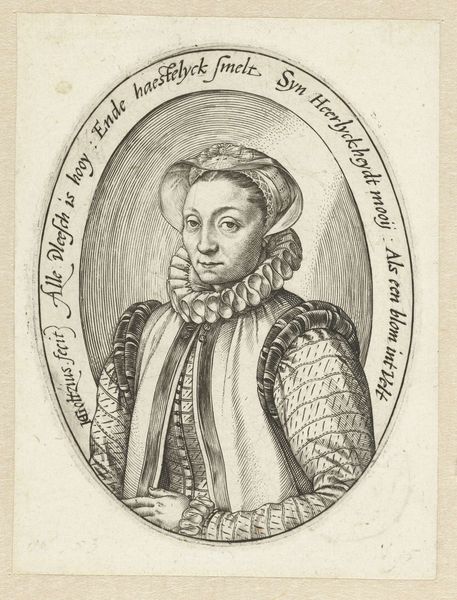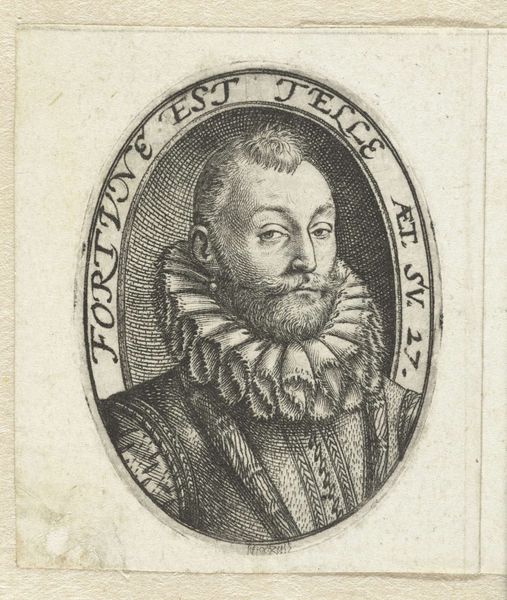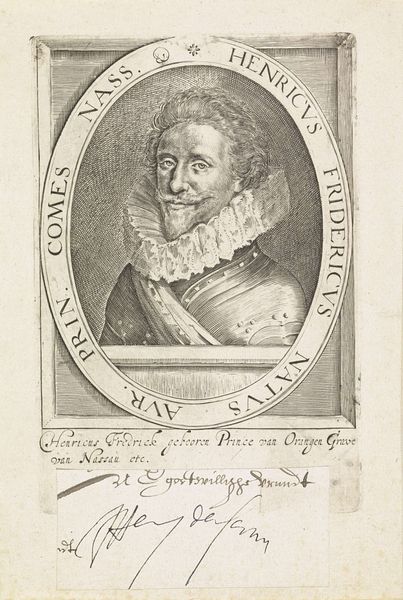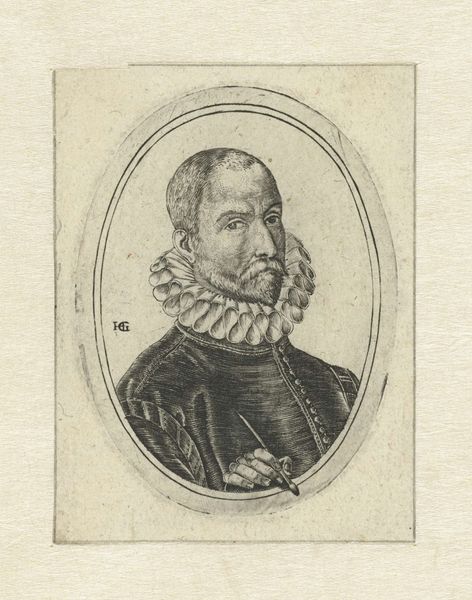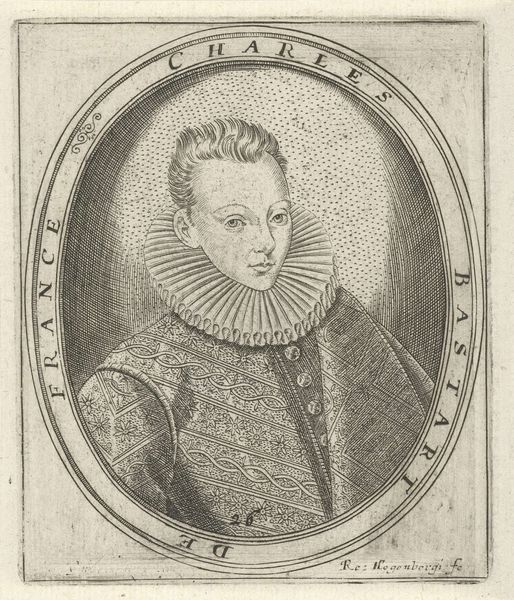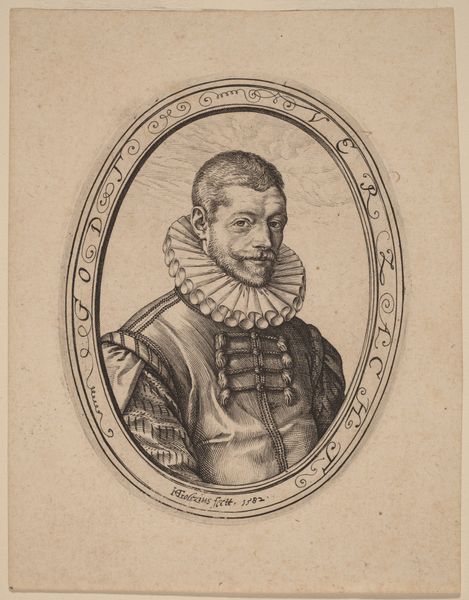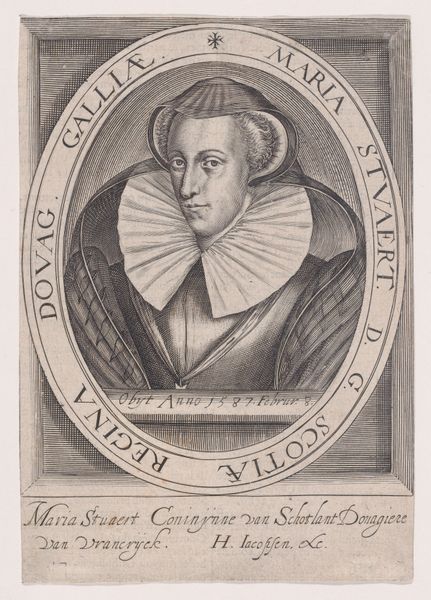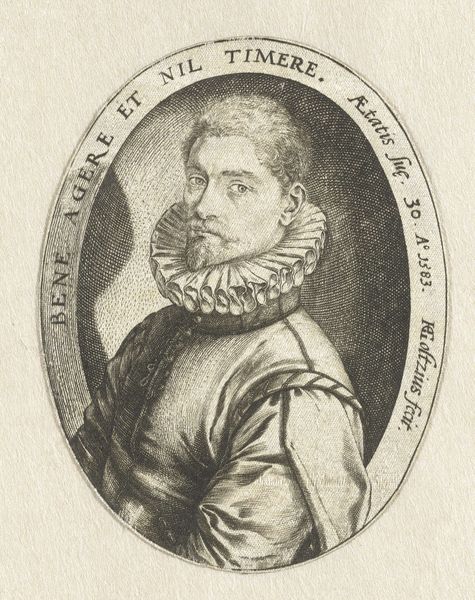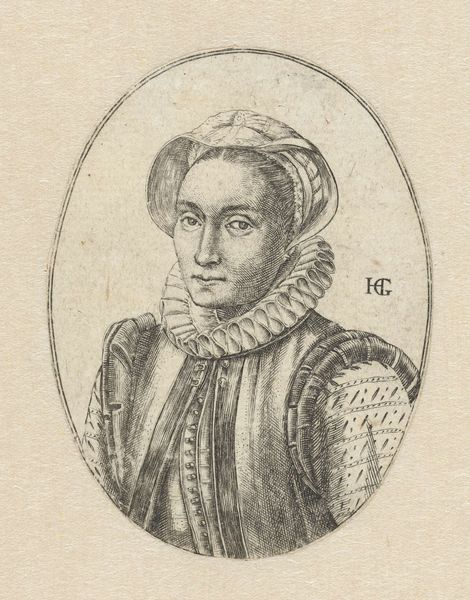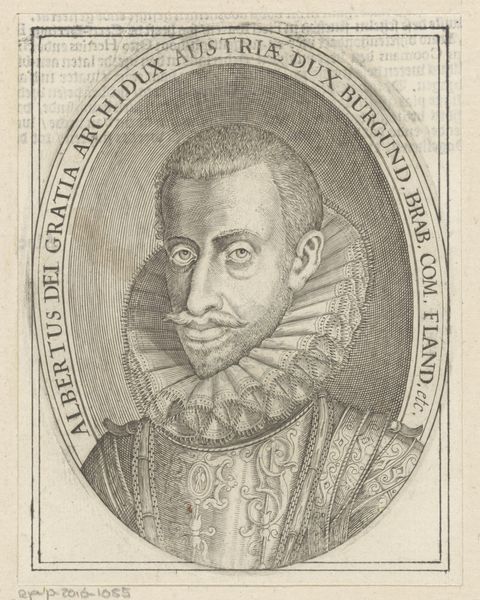
Portret van Cornelis Cornelisz. van Haarlem op 22-jarige leeftijd 1584
0:00
0:00
hendrickgoltzius
Rijksmuseum
print, metal, engraving
#
portrait
# print
#
metal
#
old engraving style
#
northern-renaissance
#
engraving
Dimensions: height 45 mm, width 45 mm
Copyright: Rijks Museum: Open Domain
Curator: This engraving, currently held at the Rijksmuseum, is a 1584 portrait by Hendrick Goltzius, titled "Portret van Cornelis Cornelisz. van Haarlem op 22-jarige leeftijd." Editor: My initial reaction is one of curious restraint. The tight linework and restricted tonal range give it a very disciplined, almost austere feel. Curator: Austerity makes sense when you consider the function of early printmaking. Goltzius worked within a well-established system, creating prints not only as art objects, but also as a crucial method of disseminating imagery. Consider, too, the role of metal engraving within that context—the tools, the guilds… Editor: Precisely. Yet the elegance is undeniable. Observe how Goltzius uses line to define the texture of the ruff. It's an essay in contrasting directions and densities. Then look at how he builds up the shadows on the face, a masterful example of tonal modulation. Curator: Absolutely. But what of the sitter, Cornelis Cornelisz. van Haarlem? A painter himself, placed strategically within a visual network. We’re seeing the construction of artistic identity through the print medium and the economic implications of its distribution. This portrait becomes part of a larger discourse. Editor: Yes, but focusing on those external factors alone misses the point of the carefully rendered planes of his face. The somewhat unusual, diamond format emphasizes his features, concentrating attention on his gaze and individual presence, and subtly underscoring its geometric arrangement. Curator: But think, this image would have reached a broad audience! Consider the political and social climate, the dissemination of artistic ideals through this technology. Engravings shaped the public’s perception of these artists, making the labor more important than its product. Editor: True, that is an interesting aspect. Still, there is value in the simplicity, and the image stands on its own. There is value in seeing it here, centuries later. Curator: Yes, it really allows for considering what its materials can tell us, particularly about that moment in history. Editor: Indeed. Analyzing both aspects makes for a fuller view.
Comments
No comments
Be the first to comment and join the conversation on the ultimate creative platform.
